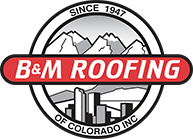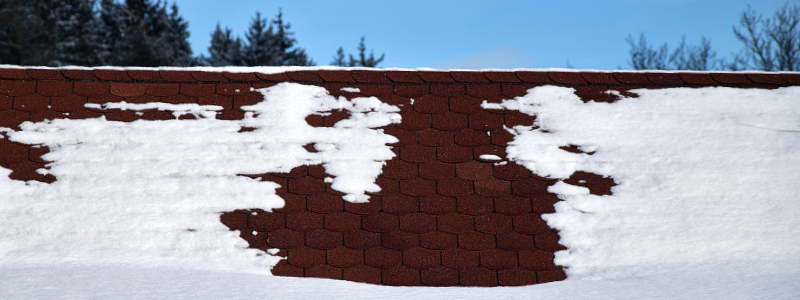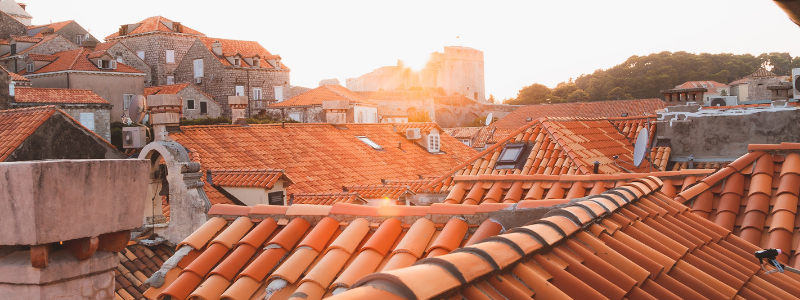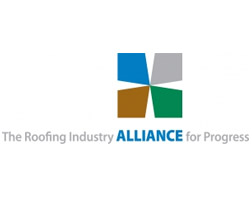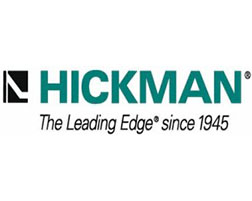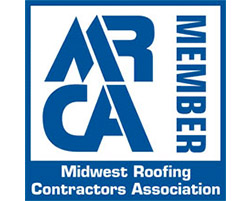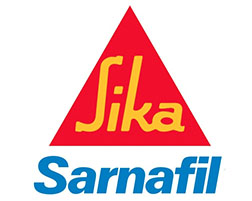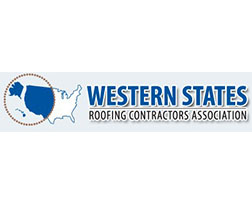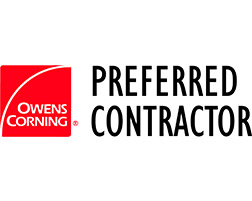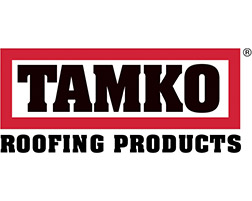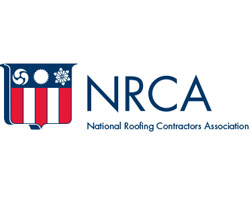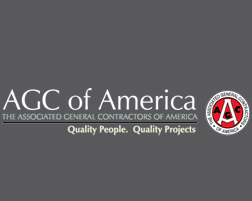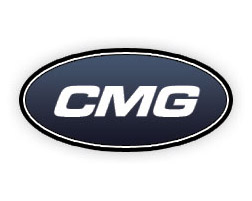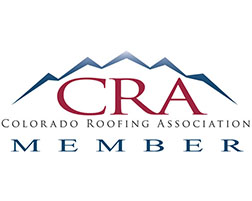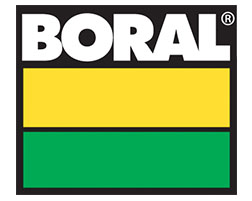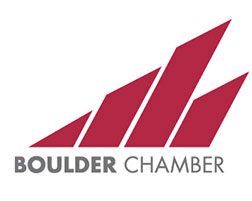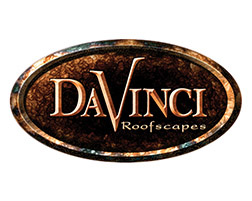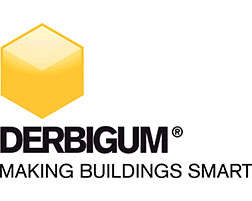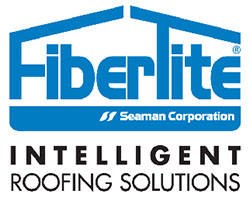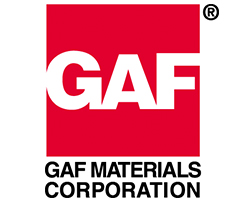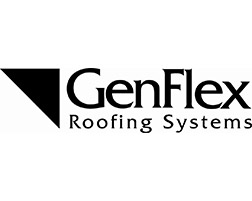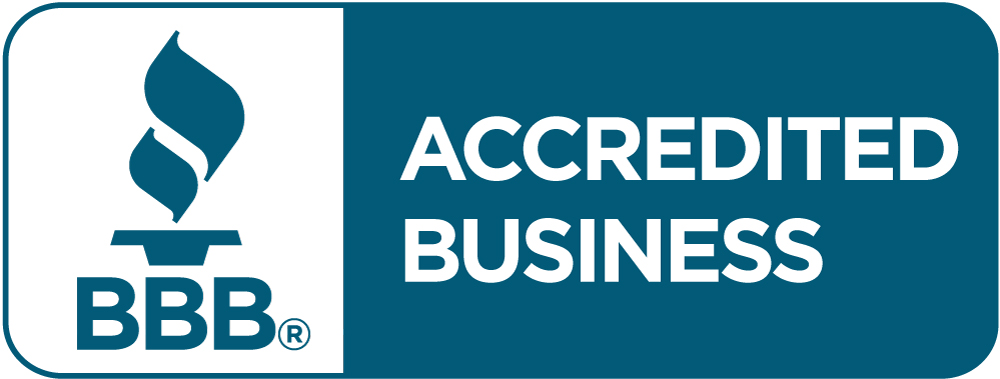What Does Freeze Thaw Mean?
In our beloved state of Colorado is known to experience turbulent weather conditions. From facing heavy snow, ice, and low temperatures, it’s no surprise that the weather changes can cause havoc in areas of our lives.
The effects of such weather conditions can subsequently lead to freeze thawing. When we consider the science behind freeze thawing, we begin to see that it is a process that can potentially be destructive to just about anything. In this case, roofs.
But what does freeze thaw mean? This post will give you insight into what freeze thawing is and how you can prevent it from damaging your home and roof.
There are certain things you can do to winterize your roof, but knowing more about what freeze thaw means and what that means for your roof will give you an understanding of how to best prepare.
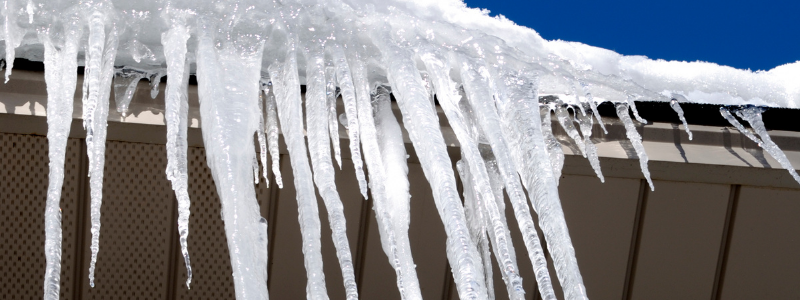
Freeze Thaw Weathering
Freeze thawing is characterized as a process of erosion that occurs when water enters cracks and crevices and expands as a result of low temperatures, this results in a build-up of pressure which is then released when temperatures increase.
The air consists of water and moisture.
A reduction in temperature causes water molecules to expand. Hence, when we consider the accumulation of rain, ice, and snow on roofs, we begin to see the signs of water expansion through roofing damage. The expansion of the water molecules causes a build-up of pressure. Roofing materials are not designed to be flexible and malleable, hence when water seeps beneath these materials and expands, it consequently causes damage such as cracks. A fluctuation in weather conditions with temperatures reaching freezing levels can have catastrophic effects as the freeze thaw cycle begins to add substantial stress on the roof’s shingles as it expands and contracts along with the weather.
The effects of the freeze thaw cycle on roofing can result in:
- Seam damage
- Ice dam damage to guttering
- Condensation and mildew within the home
- Flashing leaks
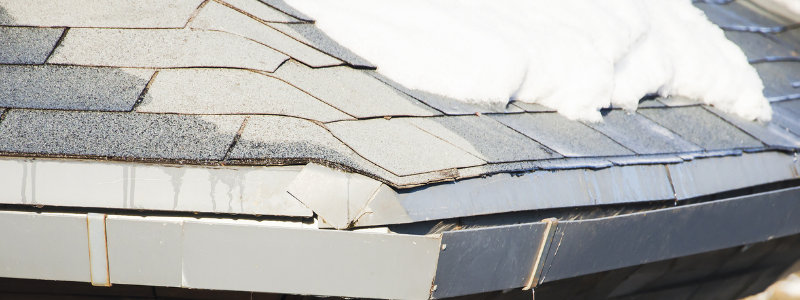
Freeze Thaw Damage
The roof of a building is designed to be a barrier that essentially protects the building from the elements. Hence, maintaining your roof is critical to ensuring that it performs in the way it is supposed to.
However, drastic weather conditions and unexpected turbulent storms can be the demise of a well-constructed roof. Despite having a sturdy roof, significant exposure to hard weather, ice, and water can cause severe roof damage with potentially long-lasting effects.
The residue water left from freeze thawing can be highly damaging as it results in water seeping under roof shingles and entering attic space. If this is not dealt with efficiently, it can lead to additional problems such as causing damp and leaks through ceilings, walls, and insulation. The presence of continuous stress applied to roofing can also result in a significant reduction in the roof’s lifespan as the cycle of contracting and expanding may bring it to a breaking point.
In addition to these damages, if your roof is made from natural material such as stone or concrete, the process of freeze thawing causes the materials to erode as a result of excessive water exposure. Consequently, this effect can become a catalyst for further damages such as water entering the home causing mold and mildew as a result of bacteria-ridden water molecules thriving in a warm environment.
How to Prevent Freeze Thaw Damage
Are you wondering if an ice and water shield is necessary?
The answer is we recommend it.
It’s critical that even if you’re not in a position where you want to completely replace your roof, you at least put the relevant precautions in place to ensure that your roof does its job effectively as it provides an additional layer of protection from weather damage. These types of shields are great for not only offering significant protection but also providing peace of mind in knowing that you don’t have to worry about the change in seasons.
An ice and water shield is a protective waterproof membrane that works to protect the roof from damage from ice dams, snow, and rainwater. It works to provide a form of protection that makes the building weather-resistant. Learn more about the benefits of an ice and water shield.
Besides implementing additional roofing protection, there are additional steps you can take to avoid winter roof problems. One of the most significant steps to take is to analyze your roof early on to ensure that any existing problems can be dealt with in advance before winter sets in. Find out more on winterizing your roof effectively.
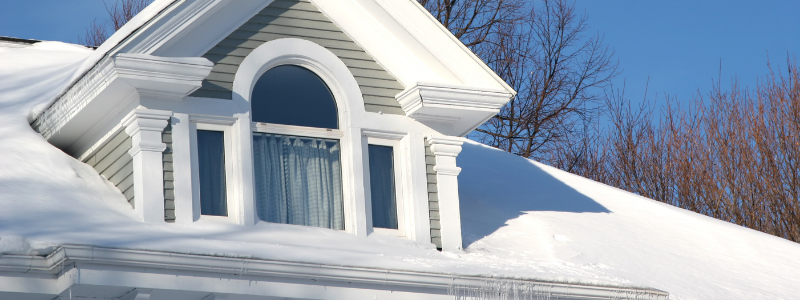
How B&M Roofing Can Help With Freeze Thaw
If you’ve started to notice any of the signs of the effects of freeze thawing, it’s not too late to get your roof back into shape.
The best thing you can do is to ensure that your roof is regularly maintained and to hire a professional to put the necessary weather protection in place. At B&M Roofing, we pride ourselves on providing leading roofing solutions and services. We offer services that ensure maximum protection for both commercial and residential roofing. Our top services for weather protection from freeze-thawing include water and ice barrier installation and roof repairs and maintenance. Our services exist to give you maximum protection and peace of mind. We consist of a reliable team of roofing experts who are exceptionally skilled in a variety of roof types.
If you’re concerned about the current state of your roof as a result of weathering and snow and you’re considering a roof replacement, find out more about what type of roof is best for snow.
Between wear and tear, natural degradation, and weathering, our roofs are built to withstand extreme pressure. However, there is only so much that can be taken. In order to protect our buildings, it’s essential that we work to maintain the quality of roofs to maintain their lifespan. Doing this requires taking the necessary steps to ensure that the correct repairs are done and that the necessary precautions or protective measures are put in place to prevent long-term damage.
There’s no doubt that the process of freeze-thawing can be devastating.
However, with services such as those provided by B&M roofing, there are solutions to tackling and preventing the effects of freeze-thawing.
Snow Damage to Roofs
We’re no strangers to snow here in Colorado. Unlike most other places, we can get a thick blanket of the cold stuff every month of the year — not that we let it get in our way! However, when the winter months roll around, the snow can get particularly problematic, especially for our roofs.
As beautiful as a vista of wintery whiteness can be when we look out our windows in the morning, Jack Frost can damage our roofs in a number of ways. Snow damage to roofs is no joke, so it’s better to know what can happen to either prevent it from happening or know how to deal with it during the cold months.
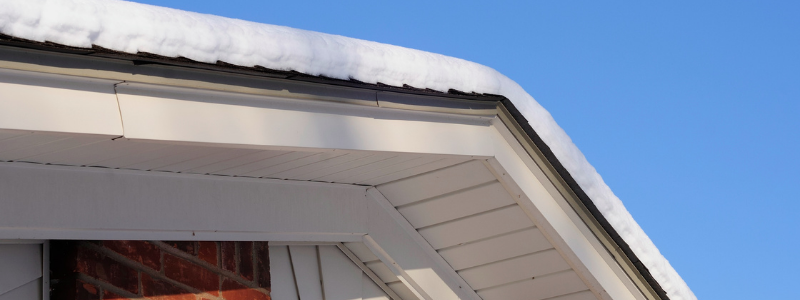
Snow Damage to Roofs: Full On Collapse
A single snowflake may not weigh all that much (roughly 0.02 g), but when thousands of these little fluffy hexagons get together, they can be extremely burdensome for the surface beneath.
According to Accuweather’s in-house forensic meteorologist, the typical roof of a house in a northeastern State can support around 30lbs per square foot, while others in snowier states such as Colorado may be able to handle between 40 and 100 lbs per square foot.
This means that, depending on your location, anything upward of 4 ft of fresh snow or 2 ft of compacted snow can be a real threat, and roofs that haven’t been repaired or inspected in a while are at an even higher risk of collapse.
If you have any external roof units such as parapets or air conditioners, they can cause an excess drift in certain areas amounting to uneven weight distribution and, again, an increased risk of sagging or collapse.
Don’t worry if you’re not sure how much snow your roof is rated to hold, as you can check out our in-depth Colorado Snow Load Guide that takes you through a step-by-step snow load calculation process.
The Fix
The snow needs to be removed, otherwise, it will compact over time, and, eventually, rainfall will add to the weight, increasing the strain on your roof. You may want to invest in a scraping tool such as a roof rake to remove snow, but this should only be used if the roof is low and there is minimal risk of injury.
It’s also important to bear in mind that the scraping tool itself will add weight to the rooftop, and, in some instances, may end up being the straw that broke the camel’s back, which is why we’d recommend contacting our experienced team before attempting a DIY fix.
Preventative Measures
The best thing you can do to prevent a snow-based roof collapse is to contact your local roofing contractor before winter strikes. They will do a thorough inspection of your roof, and advise on any repairs or reinforcements that will help your roof shoulder the weight of the coming snow.
If you’re planning on having a roof installed in the coming months, It’s critical to understand what type of roof is best for snow, before construction commences. That way, you’ll put yourself in the best possible position if you’re hit by unusually extreme weather conditions come winter.
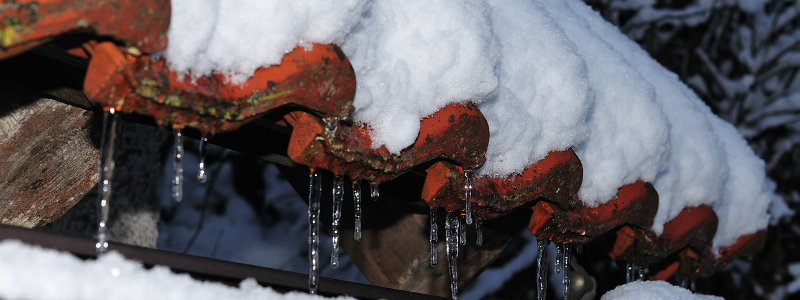
Snow Damage to Roofs: Snowmelt and Ice Dams
You’d be forgiven for thinking that if the snow on your roof starts to melt, your problems are a thing of the past, but sadly, they’re only just beginning.
As the snowy season is so cold, it stands to reason that you’ll be heating your house, either with fires or central heating. Well, the hot air that keeps your fingers, toes, and unmentionables from freezing, rises, eventually hitting the underside of your roof shingles.
Warming up over time, the central shingles melt the snow above, causing meltwater to run off towards the colder edges of your roof where it refreezes. The ice builds up at these peripheral points, amassing more and more meltwater.
What does this mean? Well, as snow and ice thaws and refreezes, it expands, prying open leakage points that can cause floods upon the next melt.
The Fix
There are a couple of things you can do to prevent further damage if you’ve already been struck by leaking caused by ice dams, including setting up a box fan in your attic aimed at the leak point to freeze the water as it enters the property.
Another neat trick is to fill some pantyhose with calcium chloride ice melter and lay them across the dam; however, you should only try this if it’s safe to do so.
Preventative Measures
The best way to ensure you never have to face damage from ice dams is to hire a contractor to make sure your attic is properly insulated and ventilated. We’d also recommend having an ice and water shield installed below your shingles.
Something you can do yourself to keep ice dams at bay is clearing your downspouts and gutters towards the tail-end of fall, so meltwater can flow freely from your roof.
Snow Damage to Roofs: Icicle Formation
If your roof suffers from ice dams, then there’s a good chance you’ll notice the formation of icicles around its perimeter, and while these look quite pretty, they can be a big problem!
They can weigh down and break your gutters, damage your shingles, and possibly even snap, fall, and hurt unfortunate people or pets below.
The Fix
As long as it’s safe to do so, you can gently knock icicles loose using a broom or rake handle. If you’re climbing a ladder to reach them, make sure it’s secure, and recruit a friend or family member to hold it in place.
Preventative Measures
Much like ice dams, you can combat icicle formation by ironing out the kinks in your attic’s insulation and eliminating rooftop air seepage. Installing ice-melting roof cables is also an option.
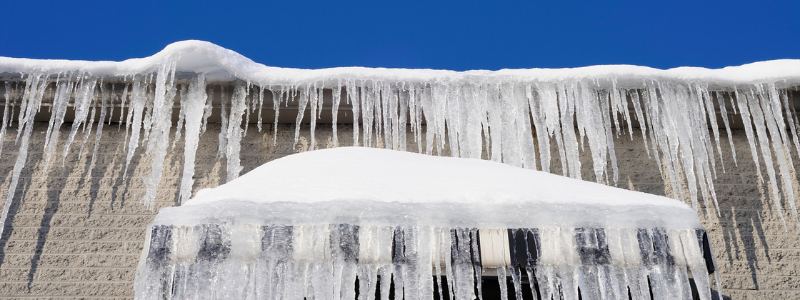
Snow Damage to Roofs: Attic Condensation
Winter build-ups on your roof can also cause excessive condensation in your attic ceiling, especially if ice dams are already established. This may not sound that serious, comparatively speaking, but it can actually be incredibly damaging.
The excess moisture will saturate the wood, causing mold and wood rot, compromising the structural integrity of your roof from the inside. Then it’s at a greater risk of sagging and collapse due to diminished weight-bearing capabilities.
What’s more, the damp is liable to spread to attic furnishings and stored items, so it’s a good idea to clear the space if you notice any dark, moist areas in your attic ceiling.
The Fix
Your first port of call should be to remove or deactivate any appliances or plumbing that may be malfunctioning and worsening the moisture build-up. Once they’re out of the way, seek out and plug any leak zones in your attic floor insulation.
Preventative Measures
Once again, optimizing your attic insulation and ventilation is absolutely key in preventing the build-up of excess condensation.
How Much Snow Damage Is Too Much to Repair?
In an ideal situation, professionals such as ourselves will be able to repair and reinforce your existing roof, but if the damage is too severe, the only option is to replace the whole structure.
If, for example, you’re experiencing leaks at a number of points across the entire roof, repairs will only be a fleeting fix, as the issue is so widespread that it’s bound to flare up again.
A general rule of thumb most roofers live by is that repairs will be effective if they cover 30% or less of the damned roof. Anything beyond that is like placing a band-aid on a bullet wound.
How B&M Roofing Can Help with Snow Damage
We know that all this information can be quite jarring, and while it should be taken seriously, we want you to know that you’re not alone in dealing with your winter roof woes.
No matter which of these winter roof problems you’re worried about or are currently dealing with, B&M Roofing can help! Our team of seasoned experts has the skills to ease the burden the snow is placing on both you and your roof, so you can enjoy the holiday season knowing the roof over your head is safe and secure. We specialize in both commercial roofing and residential roofing, so if your property is situated in or around the Denver area, please don’t hesitate to contact us for some support in winterizing your roof.
What Temperature is Too Cold to Put On a Roof?
There’s nothing worse than a roofing emergency in the dead of winter — the cold is getting into your property, the snows are on the way (or already here), and roofing contractors are hesitant to come and help you out… but what temperature is too cold to put on a roof?
Well, although no one – save the man in red – enjoys being up on a roof battling against bitter winds and slippery surfaces, it’s not just a distaste for bad weather that gives us pause.
It’s actually more to do with the installation process and the materials we use.
A lot of people don’t realize it, but temperate weather is absolutely essential to the proper installation of many types of roofs. Ignoring this will only lead to further roofing emergencies, more stress, and, of course, more expense.
Let’s discuss the matter in more detail, so you’re never caught out when old Jack Frost rolls into town.
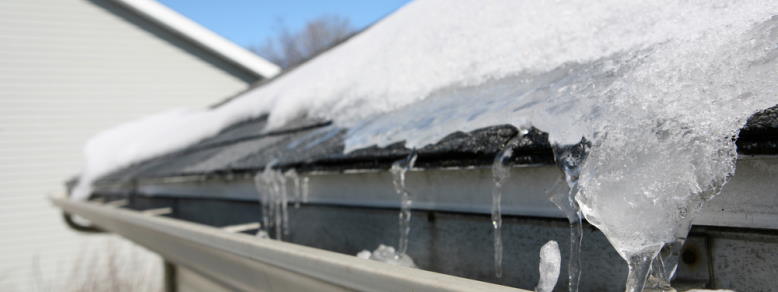
When is it Too Cold to Roof?
You may be wondering what temperature is too cold to put on a roof? Even if the wind is mild, the snow is yet to fall, and all have the correct safety equipment to get the job done safely, 30° Fahrenheit is considered too cold to perform repairs or install a new roof.
In fact, you’ll find that most roofing contractors draw the line at 40 degrees F, as this marks the industry-standard warranty threshold of most roofing materials.
This can, of course, be infuriating when you need a quick fix, but disregarding these warranties can be irresponsible, and may leave all involved parties out of pocket.
Why Is it Problematic to Roof In Cold Temperatures?
What temperature is too cold to put on a roof? There are three main reasons why attempting to roof in temperatures below 30 degrees F is a pretty bad idea.
Materials
The top layer of most roofs is composed of little tiles known as asphalt shingles. They’re durable and easy to work within temperate climates, but when the knee-knocking weather comes around, they become brittle, liable to snap or crack during the installation process.
But it’s not just asphalt shingles that hate the cold, other common roofing materials, such as concrete tiles, clay, and EPDM rubber membranes are also easily compromised in sub-zero temperatures.
Installation
To install shingle roofing, you need to form a base layer and an exterior layer. The base layer is secured to the roof deck with nails, which can be an issue if the surface or air temperature has rendered them brittle, and that’s not even the real trouble.
The top layer of shingles is fitted to the base layer with a thermally activated sealant. This sealant needs the heat of direct sunlight to cure properly and form a strong, long-lasting bond.
Without a sufficient amount of heat, the shingles will never fully adhere to the sealant, and strong winds could tear them away, revealing the under-layer. The threshold for being too cold for roofing is below 30 degrees F.
Rainwater and snowmelt will then seep into the attic via the nail holes in the first layer of shingles — not good!
Labor Difficulties and Expenses
Is it too cold to roof during winter? Due to the nature of the job, when the chill rears its ugly head in wintertime, roofing businesses are often left with no other choice but to increase their rates.
We all have to take the proper precautions to ensure our safety during a cold-weather project. These measures include…
- Clearing snow or ice from the work area
- Wearing heavier boots and protective clothing
- Working slowly to avoid mistakes, protect materials, and minimize risk
- Properly venting the attic below
- Checking for and unveiling hidden hazards such as skylights
- Taking breaks to sufficiently rehydrate and improve focus
- Possibly splitting the job into smaller sessions if the weather becomes too dangerous to work through.
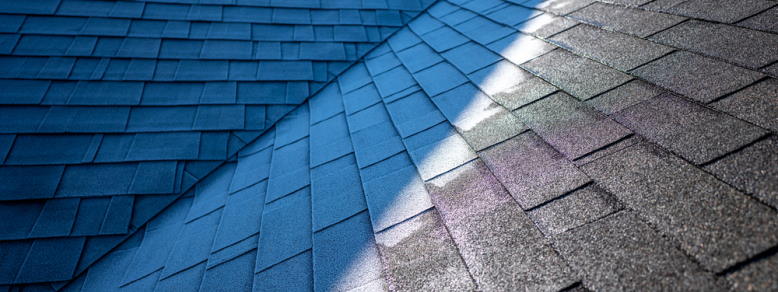
Is Putting on a Roof in Cold Weather Completely Out of the Question?
As long as the weather isn’t so extreme that it would be dangerous to do so, it is possible to roof with the temperature-sensitive materials mentioned earlier, but it’s an exceedingly tough job.
Not only will all involved have to work slowly and with a light touch, but all materials will also have to be hand sealed with a cold-weather adhesive, as thermal sealant is no longer an option.
Things are a little easier if a roof requires metal, wood shingles/shakes, or slate, as these materials do not need to be glued in place, rather, they’re nailed to the roof bed, but it can still be a complex and unpleasant task in cold weather.
Is Roofing in Cold Weather Worth It?
We take pride in our work here at B&M Roofing, and we’re not happy unless you’re happy. You deserve our very best efforts, but when nature is working against us, we can only do so much. If at all possible, it’s much better to wait for a warmer time of year to repair, install, or replace a roof.
Check out a full list of our services here.
What’s the Best Time of Year for Working on a Roof?
The best time of year for roofing is either spring or autumn. These are the mildest of the seasons, neither too hot nor too cold, and the weather is often stable for days on end.
For asphalt shingles, manufacturers typically recommend waiting for 70–80° heat, and not just for installation, but for a few days after the fact as well, just to be sure the sealant has fully activated, and your roof is as robust as it could possibly be.
When is it too cold to roof? Temperatures below 30 degrees F are considered too cold for thermally-activated sealant to perform its job correctly.
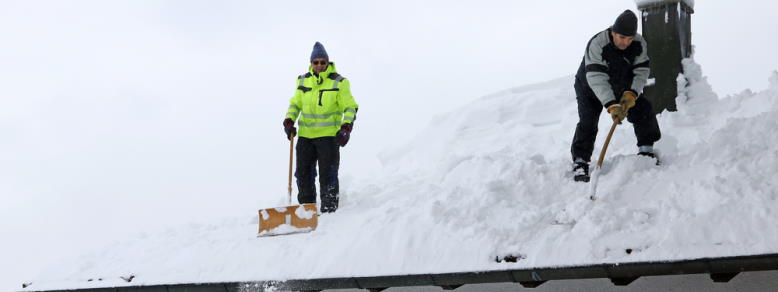
Roof Maintenance: Winter Checklist
Here’s what you can do to make sure you’re ready for the winter in plenty of time
- Contact us for a free inspection and estimate on any work that may need doing.
- Check that there are no blockages in your gutters and that water is flowing freely.
- Check your attic is sufficiently insulated.
- Check your roof for visible cracks, missing shingles, and areas that could develop ice dams.
Cold Weather Roof Emergencies: What Are Your Options?
No matter how prepared you are, some incidents are unavoidable – and winter can come with its own set of roof problems.
Perhaps a tree fall has caused damage to your roof, or you missed a loose shingle during your checks… whatever the issue, here are some pro-tips for getting through this trying time…
- Get yourself and your family to safety. If you have somewhere else you can stay for a while, do so.
- Cut off the power supply to the affected area. I’m sure we don’t need to tell you that moisture and electronics don’t mix, so if your roof is compromised, get them out of there, or at the very least, shut them down.
- If it’s a minor leak, you can try and stop it temporarily.
- Call us! With over 70 years of experience in the roofing industry, if there’s anybody capable of conquering the bad weather and saving your home from further damage, it’s us. We’ll send out our very best to assess the issue, and even if the weather is too extreme for us to make immediate repairs, we’ll be able to advise you on what to do next.
B&M Roofing Colorado: Here to Help
So, what temperature is too cold to put on a roof? Well, roofing in sub-zero temperatures is always to be avoided whenever possible, but we’re not going to abandon you in your time of need. If the worst does happen, and you’re left with a serious roofing issue in the dead of winter, we’ll do everything in our power to help you out.
However, the best course of action is to schedule regular maintenance with B&M Roofing in spring and early fall, so we can winter-proof your home well in advance, and you can enjoy the holiday season worry-free!
How to Hang Lights on Gutters With Guards
It’s easy to see why opting for a quality set of gutter guards can be highly beneficial for your home.
If you were to leave your gutters without guards, leaves and debris can start to build up in your gutters. This matter will decay over time, and can even clog up the gutters so that they can’t drain properly.
These will be especially useful during the fall and winter months when the leaves start to shed from the trees. If you have a lot of trees in your backyard, and particularly around your gutter, then you will need to have gutter guards installed to keep everything running smoothly.
The one time of year where gutter guards can complicate things is of course around the Christmas season. We all like to hang festive lights on our homes to celebrate the Christmas spirit. However, if you have gutter guards in place you may be asking yourself, how to hang lights on gutters with guards?
Today, we’re going to show you how you can hang lights on gutters with gutter guards. The good news is there is a variety of methods that you can use to keep things festive without compromising the integrity of your guttering.
How to Hang Lights on Gutters With Guards
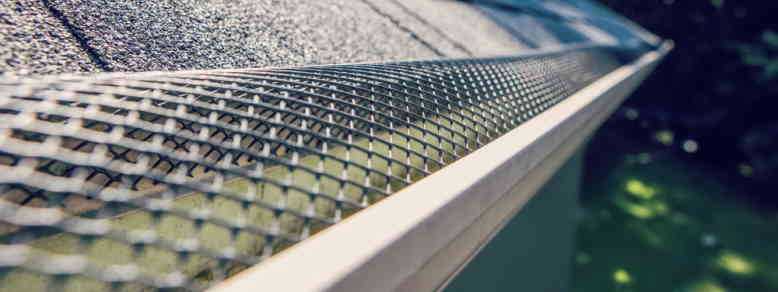
How To Hang Christmas Lights On Gutters Without Clips
Below are some of the ways on how to hang lights on gutters with guards in place.
It will, of course, depend on the style of gutter guards you have in place. However, at least one of the below methods should help you to attach your festive lights to your guttering without you having to remove the gutter guards to do so.
Christmas Hooks
One of the best methods is of course to invest in a quality set of Christmas hooks to help with hanging Christmas lights on gutters without clips.
These will essentially feature a length of wire that you can hook into the small holes of your gutter guards. These will then be able to support a variety of Christmas lights from standard fairy lights to icicle lights.
These types of Christmas hooks are perfect for gutter guards that feature a mesh, screen, or perforated design. The hooks can seamlessly fit into the smaller holes of your gutter guards without interfering with their usefulness. The hooks should measure around 3.5 inches, which should be more than enough length for your Christmas lights.
You can of course create your very own version using an old set of metal hangers.
However, you may find it easier to purchase a ready-made set that you can simply slide into your gutter guards.
Leaf Screen Clips
If you have a leaf screen type of gutter guard, then you can opt for a style of clip to help with hanging Christmas lights with gutter guards.
The great thing about leaf screen clips is that they can support the vast majority of Christmas lights. So if you want a more universal clip that will be able to hold your Christmas lights without damaging your leaf screen, this is the type that you should opt for.
This will of course involve climbing your ladder to slide them into place, so remember not to lean your ladder against your guttering. This will help to keep your guttering from becoming damaged.
All-In-One Clips
Depending on the style of gutter guards that you have in place, you might not be able to get any hooks or clips into the guard itself.
In this case, you should opt for a style of clips that you can slide under the shingles of your roof. This can help to keep your gutter guards intact, as you won’t have to fuss around with wiggling hooks into the holes of your gutter guards.
Simply slide the clips under your shingles, above the gutter guards, and you will be able to hang your Christmas lights off these. So while it’s worth noting that these types of clips will ensure that your Christmas lights are placed on top of your gutter guards, instead of having them dangling from your guttering, it still provides a relatively easy option for installing festive cheer.
Self-Adhesive Light Clips
Perhaps you don’t have large enough holes in your gutter guards for Christmas hooks, or can’t fit clips under your shingles.
In this case, you should opt for self-adhesive light clips. These can be secured underneath your guttering using the stick side of the clips. You can then hang your Christmas lights from the hooked end.
The best thing about these types of clips is that they can be used virtually anywhere on your roof. You can place them under your guttering, on the outside of your guttering, or even along the side of your home.
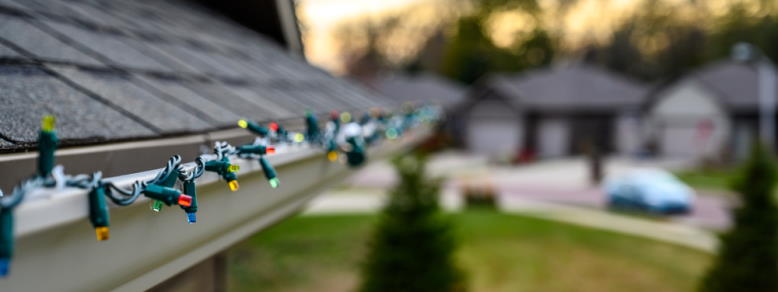
How to Hang Christmas Lights in Gutters Without Clips
While it can be frustrating trying to secure your Christmas lights to your guttering, it’s best not to remove your gutter guards to do this.
You should also not resort to hammering nails into your guttering or home just to hang your lights from them. This could impede the effectiveness of your guttering or guards, which we’re sure you don’t want to do.
To effectively hang your Christmas lights from your gutters without using traditional clips, you should instead opt for either Christmas hooks or self-adhesive clips. It will of course depend on the style of gutter guard that you have in place.
If you have holes or mesh on your gutter guards, then you should opt for Christmas hooks that can easily fit into these. You shouldn’t have to force these to remain in place, as you could damage the gutter guards.
Alternatively, you should opt for self-adhesive Christmas light clips that can be secured to the outside of your guttering without damaging them.
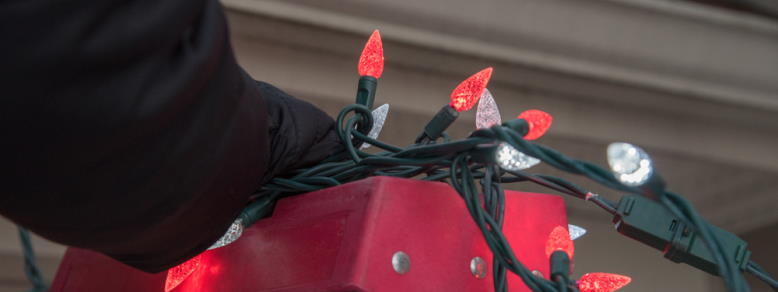
Happier Holidays with Hanging Lights
So there you have it!
Gutter guards are definitely worth the investment so as to keep your guttering free from leafy debris. The methods above show how to hang lights on gutters with guards without any damage.
But just because you have gutter guards in place it doesn’t mean that you have to go without your usual festive cheer during the Christmas season.
Installing Christmas lights to your guttering using some of the methods that we have gone into more detail about above will be super easy and effective.
Want to know more about gutter guards and how easy they will be to install on your guttering?
Get in touch with your questions!
Benefits of Roof Coating
Roof coatings have received more attention and recognition in the last few years. As the interest in sustainability and “eco-friendly” practices continues to boom, there will likely be more of a demand for roof coating services. But why? What are some roof coating benefits that commercial property managers should consider when addressing roofing needs? Below we’ll review some obvious benefits from this specific roofing service. First, you should understand how roof coating systems work.
The experts of B&M Roofing Colorado provide expert roof maintenance, repairs, and installations throughout the state for:
Learn more about our roof coating services and applications for commercial properties. Give us a call directly at (303) 443-5843, or schedule a FREE ESTIMATE.
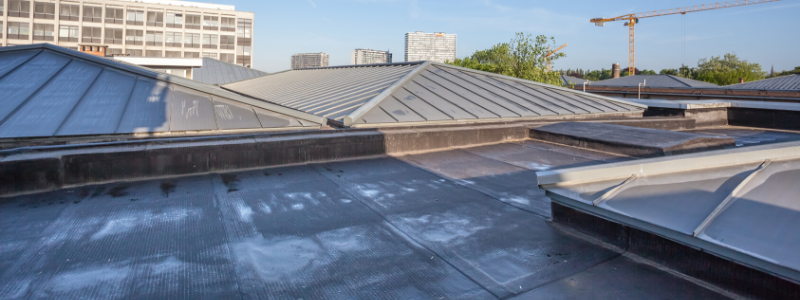
What is roof coating?
A roof coating is an extra layer of protection placed on an already completed roof that can give it a longer lifespan. There are many different types of roof coatings including:
- acrylic
- silicone
- polyurethane
- elastomeric
- asphalt
Each has its benefits and downsides. Depending on the type of building material, there are several selections to consider, but the most popular are those listed above. Also, check out an up-to-date list of the top ten roof coating products listed by MSN here. An experienced roofing expert — like those at B & M Roofing — should be able to give you suggestions or recommendations after the initial inspection. Overall roof coatings for commercial buildings can be extremely beneficial. We’ve listed the top 3 roof coating benefits.
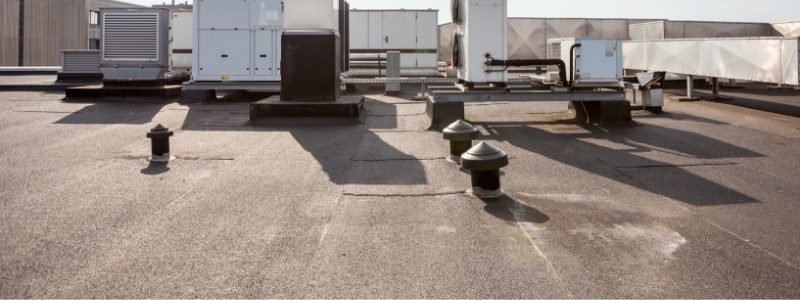
Roof Coating Benefits
Again, there are several benefits of roof coating systems. Commercial property owners usually consider the following roof coating benefits to be of top priority.
As the roofing industry changes, you are likely to see more adaptation in consideration of the rising sustainability practices and eco-friendly building materials.
Consider that to be inherent in most roof coating systems. In addition, you will also find benefits for:
1. Energy Savings
A roof with a white or reflective coating will not absorb the heat from the sun’s rays. Instead, the material serves as a barrier and reflects this transmitted heat. In turn, this provides two major benefits for commercial buildings:
- Keeps the building cooler
- Reduces Energy Consumption
In the summer, this means that the coating will keep your building from warming, thus keeping the building much cooler with drastic differences in temperatures indoors.
What, in turn, does this mean for energy consumption? Well, put simply, the building will not require as much energy use to keep things cool and comfortable. Reducing carbon footprint is a major roof coating benefit that should definitely sway most commercial business managers when considering a coating system. At a minimum it can drastically lower energy bills — and that’s never a bad business move!
2. Protection Against Leaks
Adding a roof coating gives an extra layer of protection from leaks due to physical damage.
If there are already small damaged areas, roof coatings can fill those to protect your roof for the future. Take note that most damaged areas are usually minor. If you’re experiencing extensive damage to your roof either due to inclement weather or age progression, be sure to take a look at underlying factors. In general, we recommend routine maintenance on every roof to ensure quality and extended lifespan. Check out some reasons your commercial roof might leaking here.
However, if the damage is minor, a roof coating can help protect against minor leaks. Sealing up cracks or smaller holes is one of the most noticeable benefits of these services. Also, consider protecting your roof against mold and mildew which can also cause leaks over time.
3. Extended Roof Life
Since one of the main benefits of roof coating is that it can protect your roof from damage, they can also extend the life of your roof. By using a roof coating, your commercial roof will have an additional layer of protection from elements like snow, ice, and hail. In addition, as mentioned above, roof coatings can help seal cracks and holes that lead to leaks and extensive damage. Rather than facing a new roof replacement, roof coatings can provide a secondary option for repairs rather than replacement.
By extending the life of your roof you can wait years before replacing your roof again, leaving money available for other projects.
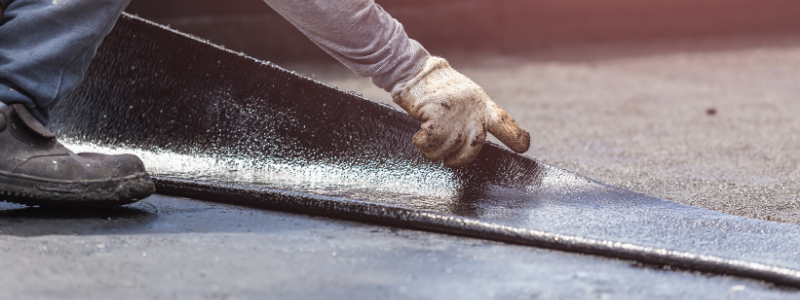
Does Roof Coating Work
We hope we have made it clear by now that the benefits of roof coating are significant enough that it is worth having done on your building. On the other hand, for it to work to its maximum potential, you’ll need to decide which type of roof coating to use.
To learn best how to use roof coating, let’s discuss the pros and cons of popular types:
Benefits of Silicone Roof Coating
Pros:
If you want to keep temperatures low in your building without spending a lot on cooling systems, one of the best things you can do is cover your roof with this material. One of the main benefits of silicone roof coating is that it can reflect a vast amount of the UV rays that are beating down on your building, so it can dramatically change the atmosphere inside.
Silicone roof coatings are also very flexible with regard to temperature, weather, and other factors. It handles hot and cold weather well, and it can withstand pooling water on the surface. To make things even better, it’s quite flexible, so you’re less likely to end up with cracking points over time.
Cons:
Unfortunately, it has a few disadvantages. It attracts dirt and debris, so it needs to be cleaned on a regular basis. Also, it can be slippery when wet, so you have to be extremely careful when walking on it. Finally, the third major downside is that other materials don’t adhere to it very well, so you often have to remove pieces if spraying something else in the same place.
Benefits of Elastomeric Roof Coating
Pros:
This material is similar in many ways to silicone, so it will come as no surprise that one of the primary benefits of elastomeric roof coating is that it can reflect UV rays to keep your building cool. Additionally, it is strong, easy to maintain, and it responds well to having small patches fixed up when necessary.
Cons:
There is one big downside to elastomeric roof coating, however. That is that it doesn’t respond well to pooling water. This doesn’t have to be a deal-breaker, though, because there are steps we can take to prevent ponds from forming on your roof. There are plenty of reasons why that’s not something you want anyway!
Benefits of White Roof Coating
Pros:
Many different coating materials come in white, so this isn’t necessarily a unique type, but we often get asked about the benefits of white roof coating. The color itself is beneficial for the reflection of UV rays, and the potential energy savings that it gives can often help you qualify for green building certifications.
Plus, if you’re roof is visible, and can give your building a clean, attractive, and modern appearance.
Cons:
The biggest downside to white is the fact that it will show dirt and any type of stain more often. Keeping it clean should be a separate issue, but this could potentially be a problem if the roof is visible and could have substances spilled on it.
Benefits of Acrylic Roof Coating
Acrylic is another popular roof coating material because it is easy to install, is cost-effective, and is very reflective.
The two major downsides are that it becomes brittle if there is a lot of ponding on your roof, and it can’t be installed in colder weather – which can add additional challenges to the initial application and any maintenance needed.
Find Out if Roof Coating Would Help You
If you’re looking for a way to extend the life of your commercial roof or protect your roof from leaks, a roof coating might be the best solution for you. You’ll also benefit from energy and cost savings. The roofing experts at B&M Roofing of Colorado are available to answer your commercial roofing questions! Contact us today at 303-443-5843.
How To Prepare For A Roof Replacement
Preparing for a roof replacement can be a daunting task. There are many different variables to consider and, depending on the extent of the roof replacement, preparing for a roof replacement can take a lot of time. But, if you know exactly what you need to do, to prepare for a roof replacement, then the entire process is much easier and quite a bit more pleasant. We’ve put together some roof replacement tips so that you know how to best prepare for your replacement.
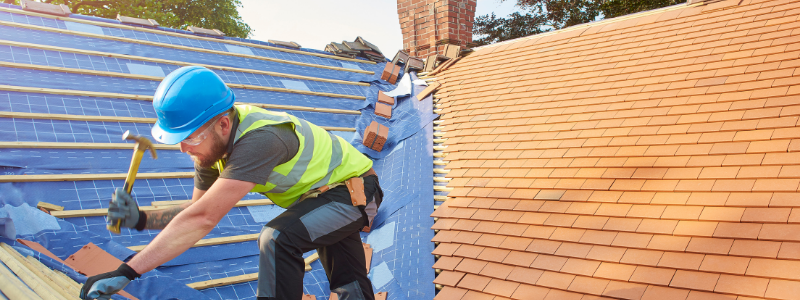
When Do You Need a Roof Replacement?
If you didn’t have a huge, damaging storm, or don’t live in a very old house, it may be difficult to tell when exactly it’s time to replace your roof. To determine whether you need to replace your roof, check to see if any of the following are true in your home or on your roof.
- Light is coming through from your roof into your attic.
- Your roof is over 20-25 years old.
- Your shingles are cracked, damaged, or buckling.
- Shingle granules are falling off in large quantities.
- The seams around your vents, skylights, or chimneys are cracked.
- There are rotting boards or sagging spots on your roof.
- There is tons of vegetation buildup from moisture trapped in your roof.
If any or a few of these things are happening to your roof, it’s worth considering a roof replacement. Read on for some roof replacement tips!
How To Prepare For A Roof Replacement
Getting your roof replacement is no simple feat. It is a substantial undertaking that can create hazards around your home, as well as a lot of noise. You should consider taking the following steps to ensure that you, your family, and those that live around you are safe. These include:
- Informing your neighbors
- Ensuring the area is safe
- Locating accessible electrical outlets
- Making sure the roof is easily accessible
- Protecting your attic
- Protecting your windows
- Preparing for a cleanup
Read on for more details about the importance of each of these roof replacement tips.
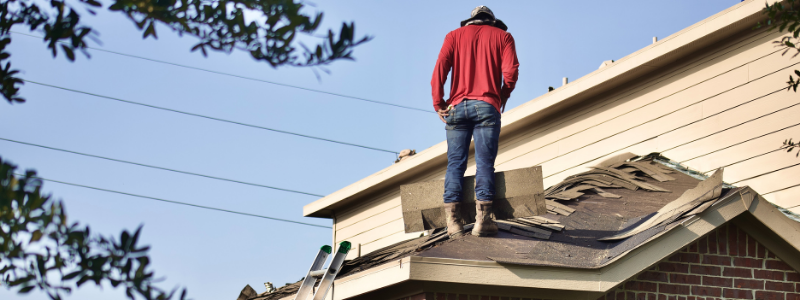
Inform Your Neighbors
Every roof replacement job is, no matter the roof that’s being replaced, loud and noisy. The people living around you will, more likely than not, be less than pleased to hear the sound of drills, hammers, and ladders – among other things – for however many days it takes for your roof to be replaced.
Since roof replacements are so loud and noisy, the best thing you can do is, to be a good neighbor, tell your neighbors what’s about to happen and how long it’s expected to take. That way, none of your neighbors will be surprised by all of the noise emanating from your roof (although we try and keep the noise levels to a minimum).
Ensure that the Area is Safe for You and Your Family
Construction areas are obviously dangerous for anyone. This is especially true for any children or pets that live in your home. Kids and pets may not know or understand how dangerous an active work area is. It’s important that everyone in your home is aware of the safety hazards that come with a roof replacement. It’s also important that pets are supervised at all times or kept in a safe place away from the work zone. If you have a lot going on in your home on a regular basis, it might be ideal to stay at a family member or friend’s house during the roof replacement.
Locate Accessible Electrical Outlets
To replace your roof, our expert team of roofers will be relying mostly on electrical equipment. For our team to use this equipment properly, we will need access to at least one – but, preferably, more than one – electrical outlet.
Locating all of the electrical outlets that are accessible from the roof – both indoor and outdoor electrical outlets – will make the entire roof replacement process a lot easier. Before the roof replacement begins, though, make sure these electrical outlets work. That way, there are no surprises.
Make Sure The Roof Is Accessible
A roof replacement is no easy task. To be successful, a roof replacement often requires several people and a variety of different equipment. All of those people, and all of that equipment, must be on the roof or, if not, easy to access from the roof or right by the roof.
To make the process of replacing your roof a lot easier, locate a few spots along your roof that our team can use to get on and off of your roof with ease. Finding these spots, and clearing them of any debris or obstructions, is a tremendous help that makes the entire process of replacing your roof easier and quicker.
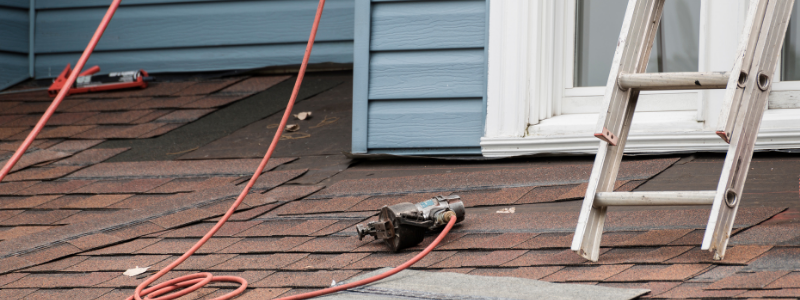
Protect Your Attic
During a roof replacement, your attic is one of the most vulnerable spaces in your home. Because of this, it is very important that you take the proper attic protection precautions. Failing to do so could lead to cherished items being damaged or a lot of dust and little bits of debris that will need to be cleaned up later.
The main precaution to take is that of removing all of your fragile or cherished items from the attic. Place those items somewhere else, so that they won’t be damaged, by accident, or become covered in dirt and dust from the roof replacement.
As a second precaution, you can lay down tarps along the floor of the attic. By doing so, all of the dust created by the roof being replaced will gather on the tarp, rather than the floor, which will make disposing of that dust a lot easier.
Protect Your Windows
All of the work being done during the roof replacement process will create a series of vibrations. All of these vibrations will flow throughout your home, making it easy for valuable items to be knocked over. But, along with that, these vibrations can also damage your windows.
For you to keep your windows safe, you will need to board them up. Boarding them up will ensure that those vibrations are unable to reach the window. The boards along your windows will also protect them from falling debris, such as loose shingles or random bits of wood.
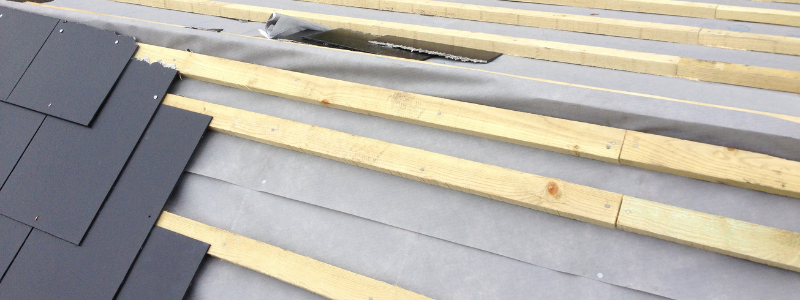
Prepare For A Clean-Up
At B&M Roofing, we take great care in bits of debris and other objects don’t fall off from the worksite and into any other space in or around your home. Along with that, we at B&M Roofing perform a thorough clean-up after every roof replacement project. We aim to leave NO TRACE.
Even though this is the case, however, it isn’t uncommon for small bits of debris to fall outside of the worksite. Because of this, prepare for your own clean-up process after the roof replacement has been finished. By performing your own clean-up process, you will be able to remove any debris that wasn’t properly removed, ensuring that no one steps on the fallen debris or is hurt by it.
As you learn how to prepare for a roof replacement, the process will only go smoother. Additionally, it will help the professionals that are replacing your roof by ensuring the process will go smoothly for them, as well.
B&M Roofing — Roof Replacement Services
Since 1947, B&M Roofing has been one of Colorado’s most trusted roofing companies. Through professional management and exceptional production teams, we continue our longstanding tradition of excellence.
We offer both commercial and residential roofing services. Our extensive range of roofing and roof repair services, including roof replacement, will help you ensure that your roof is built to last. We even provide emergency roof repair for major, time-sensitive damages to your roof. To find out how B&M Roofing can help you with all of your roofing needs, request a free estimate, fill out our contact form, or give us a call today!
Is an Ice and Water Shield Necessary?
The roof of a home is meant to protect the inside from nature’s elements. That’s why it’s important to ensure your roof does its job properly, and that ice and water are directed towards the proper gutter and drainage systems. However, extreme and unexpected weather might cause water to pass through the gaps between your shingles.
Installing an ice and water shield to your roofing system is essential in keeping your home dry and protected from damage. This extra layer of protection is important if you live in areas that receive significant amounts of precipitation and snow coverage, like Colorado. However, it’s also beneficial for homes in areas that don’t typically see instances of extreme weather.
So you might be wondering, what can an ice and water shield do for me and my home? Is ice and water shield necessary? We’ve outlined everything you need to know below.
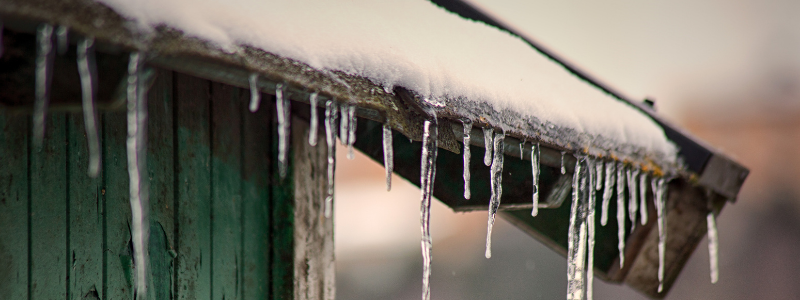
What is an Ice and Water Shield?
An ice and water shield is a waterproof self-adhering membrane made from rubberized asphalt. It is installed underneath the shingles of your roof and is designed to protect your roof deck from ice and water damage. This includes damage from ice dams, melting snow, and rainwater.
The peel-and-stick backing bonds to the roof deck, sealing around laps and nail punctures to keep water out. These protectors contain a film made of modified bitumen that attaches to the roof deck forming a watertight seal, so water can’t seep through cracks and crevices.
The slip-resistant top surface also creates better traction, making your home more resistant to strong winds and horizontally-propelled precipitation.
Is Ice and Water Shield Necessary?
Ice and water shielding is necessary for your roof, especially for homeowners in Colorado. This is because much of the state sits above 7000 feet in elevation. However, ice and water shields aren’t only limited to homes and buildings in high-altitude areas. Defending any structure from any type of weather-induced damage starts with the roofing system.
If your home is in an area that typically doesn’t see extreme weather, you might think you don’t require this extra layer of protection. However, if left untreated, all the small damages on your roof can eventually add up, leading to more serious damage.
Being prepared with an ice and water shield installed can reduce the need for constant repairs and extend the lifespan of your roof.
Nature vs. Your Roof
No matter where you live, natural elements can cause damage to your roof. These types of damage include:
- Curled shingles
- Cracked shingles
- Interior water damage
- Insulation damage
…and more!
Strong winds and extreme weather can cause horizontally propelled rain, hail, and snow. Shingles are designed for precipitation that falls vertically, but extreme weather can cause shingles to curl and push rainwater underneath into your roof’s foundation.
In places with low temperatures and snow, the accumulated weight of snow on your roof can also crack shingles. This may create more entryways for water to flow inside your home. Additionally, homes in colder climates are more susceptible to ice dams and frozen gutters. Installing an ice and water shield will prevent the chance of leaks from winter-roof damages.
Many home insurance companies don’t cover damages from wind-driven rain or ice-packed roofs. Therefore, it’s in your best interest to prepare and protect your home from any risk of weather-induced damage.
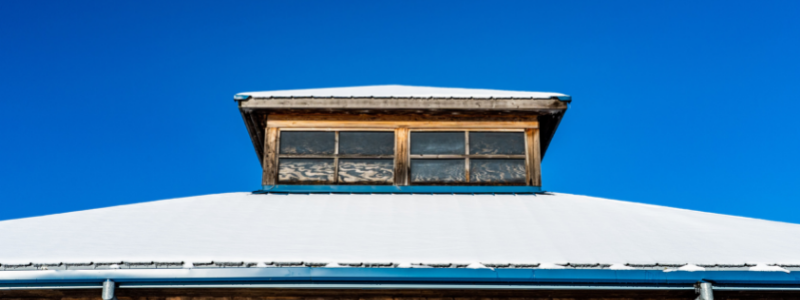
The Dangers of Ice and Water Damage
We know that water and ice can damage your roof. What you might not know is that the resulting water damage can extend to the interior of your home. Water that does not drain properly can work its way under your shingles, into your attic, and further through your insulation, ceilings, walls, and other areas.
If your exterior or masonry is made from natural stone and concrete, too much water exposure will cause these materials to erode. This can cause water to further pass through the cracks on your roof, walls, and possibly the basement of your home.
In colder climates, the formation of ice dams and heavy snow loads can cause severe damage to your roof. It can break off your gutters, loosen shingles and cause water to leak into your home. When water enters the home, it can cause paint to peel off the walls while ceilings and floors can start to warp and stain, becoming very unsightly.
Water entering the home can not only cause several types of structural damage, but it can also lead to mold and mildew to grow on eaves, slidings, and walls. Mold and mildew can result in health problems such as asthma, sudden allergies, and an increase in sinus infections.
Spend to Save
Spending the money on ice and water shielding will help you save money in the long run. Skipping out on the ice and water shield for your roofing system can save you money in the short term, but it will most likely lead to problems that can cost thousands of dollars to repair later on. Roof damage will also impact the insulation of your home, causing you to rely more on your heating and cooling system, increasing your household’s utility bills.
With an ice and water shield, homeowners can save on the cost of constantly getting their roofs inspected for repairs or damages. Roof maintenance can be costly. It can become a dreaded task on your chore list. Opting for an ice and water shield is a more permanent solution if installed correctly. It will greatly reduce maintenance efforts on your end.
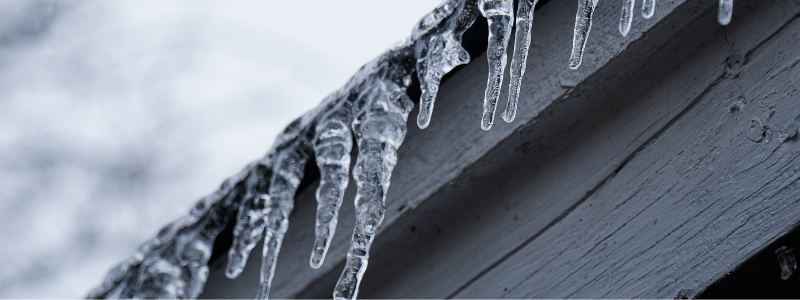
There’s no better way to protect your home (wherever you are in the world) from leaks and water damage than installing an ice and water shield in your roofing system. The shields are durable and effective in keeping your home dry and well-maintained. Because it can be a costly home improvement project, it is in your best interest to consult a professional roofer. Experienced professionals can determine the best ways to keep your roof and your home in tip-top shape. So, if you’re still asking, “Is ice and water shield necessary,” you’ll find that the answer, most likely, is yes!
B&M Roofing: Colorado’s Top Roofing Experts
Since 1947, B&M Roofing has been Colorado’s most trusted group of roofing experts. Our reliable, and well-seasoned team of roof experts are skilled with various roof types and will ensure your roof does its job as a safeguard for your home.
We can assess the current state of your roof, identify repairs and provide you with a reasonable budget. Request a free estimate on our website or give us a call today!
Passive Roof Vents
Roof vents are necessary for your home or commercial property. They protect buildings in many ways. Without roof vents, your home or office may be too hot in the summer and too cold in the winter. This makes your heating/cooling system work overtime. There are many different types of roof vents you can use, including passive roof vents.
Inadequate roof ventilation may also result in unhealthy living conditions. When deciding on what kind of roof vents will be best for your property, it is important to know and understand your options.
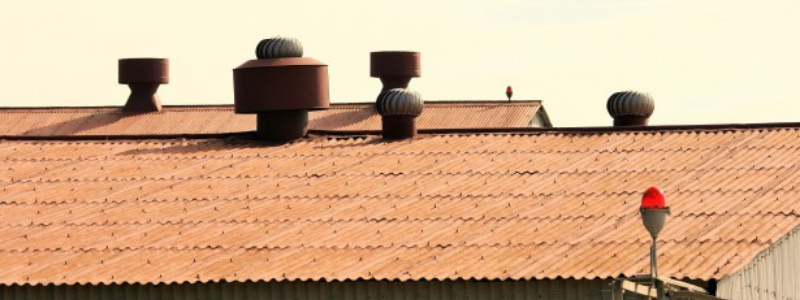
What are Roof Vents?
Roof vents or exhaust vents are installed at the top of the roof. The roof ventilation in your property lets air circulate through the attic of the building. Regulating the air in this space can have many benefits.
Why are Roof Vents Important?
Roof vents are mainly installed to allow heat, hot air, moisture, and odors to escape from your attic. Roof turbines have blades that spin in the breeze. This motion pulls air up through the house into the attic and out through the vents.
Roofing ventilation systems work year-round. They balance the intake of cool air and the outflow of warm air. Roof vents are often located at the peak of your roof because hot air accumulates there.
Roof Vents Year-Round
Combined with attic fans, roof vents can significantly cut the cost of heating and cooling your home. Warm months intensify heated air because outside temperatures rise. If your home is not properly vented, your air conditioner may get overloaded trying to replace warm air with cool. During cooler months, your heating system produced warm aid. This heated air mixes with water vapor from activities like cooking, showers, and bathing. If this warm, moist air lingers in your attic, it can cause mold, mildew, damage to roofing studs, and even ice dams when temperatures drop outdoors.
Roof Vents for Protection
Roof vents can also protect your home from costly structural damage caused by ice dams, moisture buildup, tapped heat and mold, or poor indoor air quality. Poor ventilation can eventually cause shingles to fail, resulting in roof leaks. If this occurs, the structure of your building may be compromised.
Roof vents extend the life of your roof. This can allow for huge savings. Vents also regulate the temperature of your property. Thus, they reduce energy costs. If an attic is well ventilated, it will reduce the chances of rot, mildew, mold, and peeling paint.
Types of Roof Vents
The goal of roof vents is to equalize the inflow of cool air and the outflow of warm air. Multiple types of roof vents used in combination can achieve this effect.
Intake Vents
Intake vents improve exhaust vents’ ability to reduce attic heat. They draw in cooler air from the outside. As the cooler air enters, it forces warmer air to rise and exit.
Intake vents should be evenly distributed along the roof of the house. The most common intake vents include:
- Soffit vents. These are placed on the material under the eaves or between the joists on your roof.
- Ridge vents. These are installed at the peak of a sloped roof. They allow warm, damp air to escape from the attic.
- Gable vents. These are installed in the two gabled ends of your attic. Ideally, they are placed so they take advantage of the prevailing winds. Depending on the wind, gable vents can serve as both intake and exhaust vents.
Exhaust Vents
Exhaust vents are located at the top of the roof. They provide an easy exit for heated air, odors, and moisture to escape from the attic. If this air does not get out, the result can be a buildup of heat and moisture. Besides poor air quality, roof damage and peeling paint may occur.
Common types of exhaust vents include the following.
- Ridge vents run along the top edge of the roof. When the wind blows across their ridges, this results in uniform air movements.
- Roof turbines have blades that spin in the wind. This pulls air through the intake vents. Roof turbines are evenly spaced across the roof.
- Static roof vents are often called roof louvers. These fit into the highest peaks of a roof.
- Gable vents are one type of louvered vent. Depending on wind direction, they may be intake or exhaust vents.
Are Fans Necessary?
Fans on ridge or gable vents help blow hot, humid air out of an attic. Attic ventilation fans are energy-efficient and don’t cost much to operate.
They help cool air and prevent hot air from remaining in your attic while pulling in cool air.
Attic ventilation fans tend to be quite energy-efficient. Many of them are solar-powered and require no additional electrical work.
However, some argue against attic ventilation fans because:
- Attics with good insulation shouldn’t need fans.
- Fans can cause loss of conditioned air if the attic is not airtight.
Why Choose Passive Roof Vents?
Passive roof vents use natural elements like wind to move the air through the attic and out of your home. They do not rely on fans. Thus, they are environmentally friendly.
Most homes have some degree of passive attic venting. Cooler air enters through soffit vents. Air that heats up inside the attic rises and exits through gable vents or ridge vents. Warm air leaving the attic creates negative pressure sucking in cool air.
There are several advantages to using passive roof ventilation:
- You don’t have to buy any fancy equipment.
- Passive roof ventilation is quiet.
- When you do not rely on fans, you reduce your carbon footprint.
- Passive roof vents result in cleaner air.
- Maintenance and replacement costs stay low.
- Passive roof vents produce more consistent heating/cooling of the air in the building.
- Energy bills will be lower.
- Natural ventilation provides more efficient humidity control.
Using the most effective combination of roof vents can improve your home’s livability. Well-selected and maintained roof vents can reduce your energy costs. They can also increase the life of your roof and reduce costly repairs.
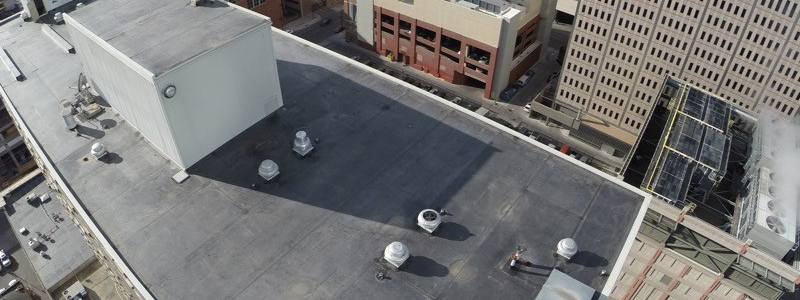
How Can B&M Roofing Help?
It is important that roof vents be installed properly and checked regularly by roofing professionals. Colorado’s many days of sunshine, brisk winters, and high winds create unique weather challenges. B&M Roofing has been installing, inspecting, and repairing roof vents in Colorado since 1947. Our roofing specialists are proud to provide their valued clients with reliable, meticulous service. B&M roofers are experienced, licensed, and insured. We have a guaranteed commitment to excellence. To let us know how we can help you choose the most effective roof vents and placement for your home, contact us today!
Are Gutter Screens Worth It?
Clogged gutters can be a nightmare. They can lead to overflowing, which can then lead to water intrusion, which further leads to extensive, and expensive, water damage within your home. Gutter screens, also called gutter guards, are designed to sit on top of your gutter to prevent debris from falling inside them. This allows for rainwater to pass through freely, as the screens prevent clogs and blockages.
There is a variety of different kinds of gutter screens available on the market. Gutter screens can be made from:
- Vinyl
- PVC
- Steel
- Aluminum
Each type is engineered differently and has its own pros and cons. The most common type of gutter screen is a rounded screen that attaches to shingles on a roof, covering the gutters. The mesh captures debris and prevents it from entering the gutters.
Another type of gutter screen design is made from micro-mesh stainless steel, which allows rainwater to run through small holes while blocking leaves, sticks, and debris from falling in. Other types of gutter screens include surface tension guards, brush guards, and foam guards.
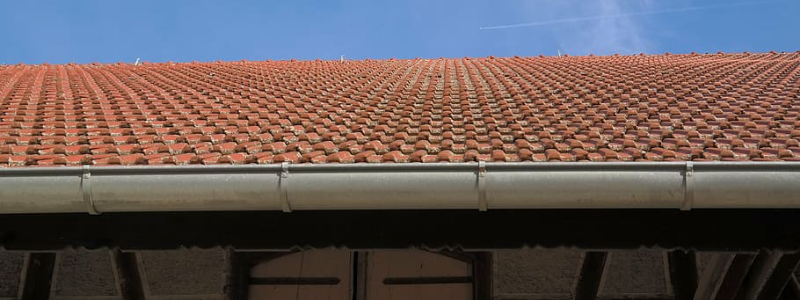
So, you’re probably asking yourself: are gutter screens worth it? The question is more complicated than it seems.
Depending on which type of gutter screen you choose, they can become quite costly. However, they can also significantly reduce gutter maintenance efforts and prevent blockages.
To help answer the question, “Are gutter screens worth it,” we’ve put together some of the benefits and drawbacks of having them installed on your home. Here are some of the pros and cons.
Are Gutter Screens Worth It: Pros
They make gutters easier to clean.
Gutter screens do a very good job at preventing the accumulation of branches, leaves, and shingle granules in your gutters. Therefore, you’ll find yourself having to clean your actual gutters less often. Gutter screens themselves must still be cleaned and maintained to keep them working efficiently. Cleaning gutter screens involves removing accumulated materials off the guards and potentially hosing them down. Gutter screens reduce the time it takes to clean your gutters. They are especially worth it if you have large trees surrounding or near your home.
They reduce ice dam formation.
Since gutter screens direct water away from your home and prevent the accumulation of stagnant water, the chance of ice dams forming inside the gutters is reduced. This is especially true if your gutter screens are heated. Ice can damage your gutter system and can be quite costly to repair. Heated gutter screens might be beneficial if you live in areas with harsh winters with cold temperatures and lots of snow.
They help to prevent animal infestation.
Gutter screens can prevent wildlife such as squirrels, birds, mice, and insects from nesting and breeding in your gutters. This is because they reduce the amount of stagnant water sitting inside your gutters.
Stagnant water attracts vermin and insects which can lead to infestation inside the home if the problem is not handled immediately. Gutter screens also work as a physical barrier for rodents who can navigate their way inside the home.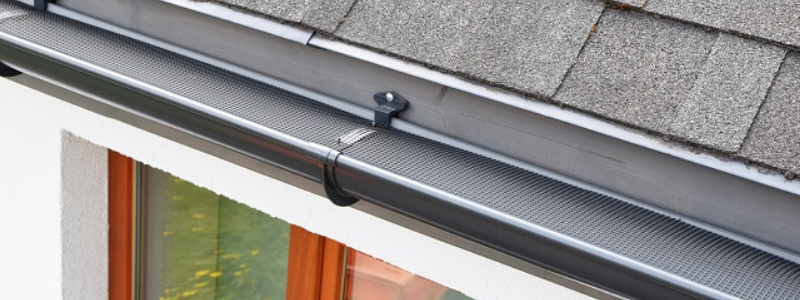
Installation can be easy and inexpensive.
Gutter screens can be easily installed without altering your existing gutter system. These are some of the most affordable gutter guard options. The price of gutter screens usually starts under $1 per linear foot, depending on the material used.
They prevent blockages and clogs.
Because gutter screens reduce the amount of debris that collects inside your gutters, the chances for clogs and blockages are diminished. Blockages and clogs can lead to water damage, erosion, and the formation of rust. It can also lead to water entering the home, causing mold and mildew to grow. Additionally, blockages and clogs that lead to overflowing can result in unattractive water stains on your home’s exterior.
Are Gutter Screens Worth It: Cons
Gutter screens need cleaning, as well.
Yes, it’s true gutter screens remove a huge load of cleaning your gutters manually, but it doesn’t remove the need for maintenance entirely. It is important to clean your gutter screens every so often, if they are left uncleaned, debris can accumulate on the screen and prevent water from passing through the mesh. Additionally, the added weight of debris build-up on your gutter screens can cause your actual gutters to become loose and sag, or even fall off completely.
They might not be effective if not installed properly.
Gutter screens are extremely effective when installed properly. However, poorly installed gutter screens might end up being a waste of your investment. Poorly installed gutter screens can dislodge during intense weather. Make sure you hire a reputable roofing company, such as B&M Roofing, and leave it to the experts. Installing gutter screens yourself can be a dangerous task, and it can result in poor installation and future damages.
They don’t last forever.
Nothing lasts forever, and that’s especially true for gutter screens. Basic gutter screens, such as those made from plastic can last 6 to 8 years depending on the climate you live in and how well you maintain your gutter system. The longevity of gutter screens also depends on how well they are installed and what materials are used. Screens made from metals such as aluminum, copper, and stainless steel will last much longer than screens made from plastic and foam.
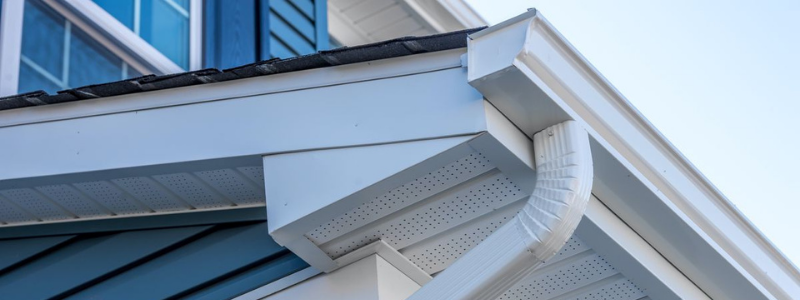
B&M Roofing: Colorado’s Best
Since 1947, B&M Roofing has been proudly serving homes throughout Colorado. Our team of expert roofers can help you decide which gutter system is best for your home and budget using extensive knowledge and best practices. We understand the challenges that roofs face in Colorado’s climate. We know how to restore and protect your roof and gutters to keep your home structurally sound. If you’ve asked yourself, “Are gutter screens worth it,” and your answer is yes, we can certainly help.
When it comes to our reputation, B&M Roofing is known for being fast, efficient, and cost-effective. Whether it’s maintenance, repair, or replacement, our roofing experts will do the job right. Contact us today for a consultation and an initial free estimate. We can provide well-backed suggestions to help you make well-informed decisions about your roof. Call us today!
Environmentally Friendly Roofs
When deciding on the details of your new roof, there are many factors to consider, especially if having an eco-friendly roof is a priority for you. Environmentally friendly roofs are typically more expensive than choosing regular asphalt shingles, but the long-term benefit of added savings and fewer repairs continue to convince homeowners to make the switch.
Many eco-friendly shingles out there in the market today are made from recycled materials such as plastic, wood, and rubber. There are also other eco-friendly alternatives that use new materials but still produce fewer emissions than traditional asphalt shingles.
Asphalt shingles are cheap to install but they’re not very sustainable. They’re almost impossible to recycle and release carcinogenic contaminants into the air when burned. On top of that, asphalt shingles require regular maintenance and repair because they’re easily susceptible to wind damage such as folds, cracks, and blisters.
Choosing to install an eco-friendly roof will significantly reduce the carbon footprint of your home and allows you to contribute to a healthier ecosystem, but those aren’t the only perks. Here are other factors that might persuade to switch to eco-friendly roofing materials:
- Recyclability
- Long lifespan
- Durability
- Improved air quality
- Reduced energy use and utility costs
When choosing the best eco-friendly roof option for your home, it’s important to know and understand when each type can be used most effectively.
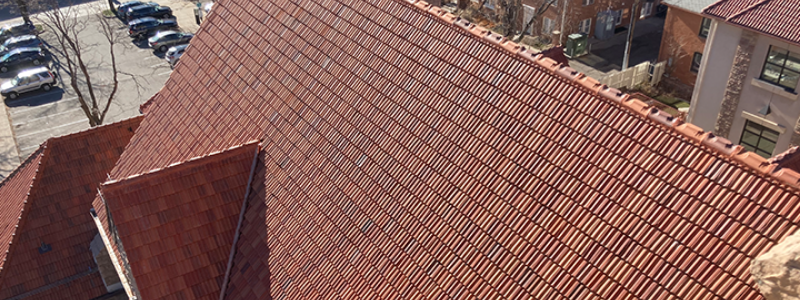
Here are the best options for environmentally friendly roofs for your home:
Cool Roofs
Cool roofs are roofs that have light-colored shingles. The light roof color reflects sun rays away from the foundation below, resulting in a reduced cooling load in the warmer months and lower utility costs. This type of roof is great if your home is exposed to large amounts of sunlight because it will prevent your home from absorbing too much heat.
Check out which roof colors are best suited for your home.
Clay Roofs
Roofing tiles made from clay are known to boost a home’s curb appeal but they can also help you save money on your power bills. Clay roofs provide adequate insulation for the home and can reflect heat from the sun. Air is free to circulate underneath clay tiles which helps regulate your rooftop temperature and maintain a comfortable temperature inside the home.
Another eco-friendly point is that clay tiles are completely recyclable if properly salvaged. They are also extremely weather-resistant and durable. However, because of its heavier weight, you must ensure a qualified and expert roofer does the installation for you. If the job is not done properly, you might be left with structural damage that can be not only expensive but dangerous as well.
Wood Shingles or Shakes
Wood shingles and shakes can easily be recycled and repurposed into new and usable products. This is why wood is an eco-friendly choice. These roofs also provide natural insulation that will help keep your home at a comfortable temperature, also making it an energy-efficient choice.
Wooden shingles or shakes are constructed with fire-resistant cedar or redwood and last between thirty to fifty years. Additionally, the authentic appearance and texture of wooden shingles can increase the home’s curb appeal. However, it’s important to note that wooden roofs require regular inspection to ensure it is free of rot and mold.
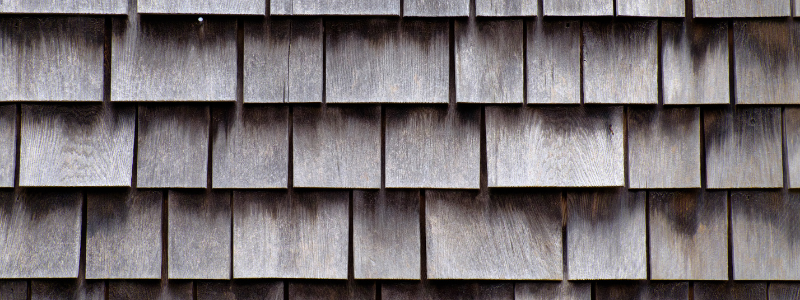
Rubber Roofing
Rubber shingles are made from recycled tires (95% recycled material) and all scraps left from manufacturing and installation are reused at the roofing material factories.
These types of roofs protect the home from heat, low temperatures, and harsh weather conditions. You can also get energy-saving perks with rubber roofing as it can insulate your home more effectively and efficiently. Since rubber shingles are highly resistant to water and ice, they are also crack-free which eliminates the chance of leakages.
Installing rubber shingles can have a higher upfront cost, but it is typically more affordable when you compare them to other eco-roofing materials. Additionally, the installation process is fairly easy and requires little to virtually no maintenance.
Metal Roofs
Metal shingles are made from at least 25% recycled material and are 100% recyclable themselves. Similar to cool roofs, metal roofs have reflective properties that deflect sunlight away from the home and can reduce cooling costs by as much as 25%.
Metal roofs are extremely durable, fire- and weather-resistant, and come with an approximate life expectancy of 50 years. Metal shingles come in a variety of alloys and styles, making them extremely versatile and they look great on any type of home. Additionally, they are 100% recyclable, giving your home that extra eco advantage.
Solar Roofing
Solar Roofing involves placing solar panels on an existing roof. Unlike metal and cool roofs, solar panels absorb sun rays and convert that energy into usable electricity.
Although the initial installation can be expensive, homeowners can expect to save thousands in utility bills throughout the roof’s lifetime.
It’s also worthy to note that the U.S federal government provides a 26% investment tax credit for home solar power systems.
The only issue that can arise with solar roofing is that it requires adequate amounts of sunlight to run efficiently. If you live in an area without widely available sunlight, solar roofing might not be the best option for you.
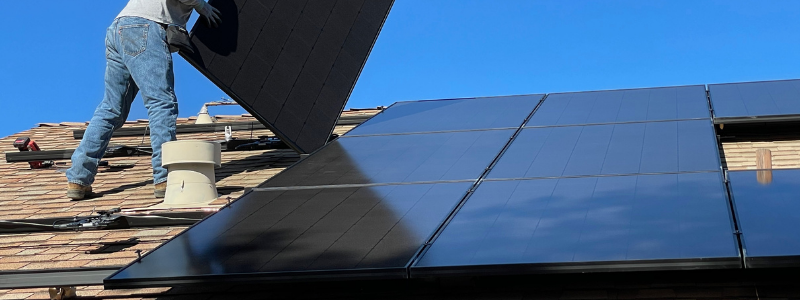
Green Roofs
A unique eco-friendly roofing option is non-other than a green roof. Green roofs transform the top of your home into a garden landscape. This type of roofing can provide extra cooling and insulation and can reduce the amount of rainwater runoff within your home’s exterior.
A green roof is one of the most environmentally friendly roofs available, however, it requires adequate maintenance. Plants on the roof require watering, feeding, and weeding. Poor maintenance keeping on green roofs can result in overgrowth or decay and become unsightly.
B&M Roofing Expertise
There are obvious benefits to choosing an eco-friendly roof for your home. Not only is it better for the environment. Eco-friendly roofing options tend to be cost-effective, energy-efficient, and durable.
Contact B&M roofing and request a free consultation. We are a trusted Colorado-owned company known for our commitment to excellence. Fill out this form online or call us today to start your eco-roofing project.
